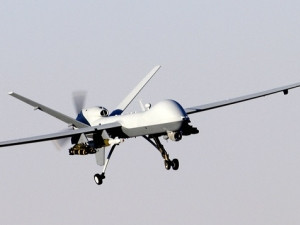
Players in the remotely-piloted aircraft (RPA) space have expressed mixed reactions to Sunday's announcement that new regulations will be effective from July.
The use of RPAs, or drones as they are more commonly referred to, has been technically illegal because no drone could meet the Civil Aviation Regulations requirements for operating an aircraft in the South African airspace.
However, South African Civil Aviation Authority (SACAA) director Poppy Khoza says the body saw the urgent rising need from the industry to regulate this new technology so it could operate safely within local airspace.
Action shots
FC Hamman, owner of FC Hamman Films, says he is fully in favour of having regulations in place but feels they are too restrictive. The company has been using drones for the last four years in its film work in movies, commercials and news features for local and international clients.
"Consultations with the industry were not done properly and different segments should have been looked at individually," says Hamman. For example, the security and film industry will require the ability to fly closer to buildings than the new regulations allow, he notes.
Hamman says this leaves no room for innovation and pushing this new technology to its limits.
John Gore from film company Drone Crew says: "As a leading film industry drone operator, we have always supported the need for fair regulations for drones. Wherever possible we have, along with others, tried to help the SACAA to understand the new and evolving technology as well as potential safety concerns, etc."
Hobbyist Alexander Higgins, who has been following the regulation process closely both in SA and internationally, says: "I am pleasantly surprised by how comprehensive the regulations are, and believe they will become a benchmark for other countries to follow."
"Regulation is always a balancing act between conflicting objectives," says Brian Neilson, director at BMI-TechKnowledge. "Tighter controls are good in that they protect come consumers' interests, eg, in the areas of privacy and safety; while on the other hand, looser regulation would afford more freedoms to other groups, notably those using the drones."
He says in the beginning, it is probably not a bad idea to err on the side of protecting privacy and ensuring safety "as these restrictions can be relaxed in time". This will happen "based on international best practice, against which any regulations generally need to be benchmarked".
However, there is not much international track record to go with at this stage, as SA is fairly early to enter the game, says Neilson.
International examples
While some industry players say we are in the dawn of a new industry and the SACAA must do everything in its power to help SME and industry development by reducing regulations, the SACAA is adamant the safety of people comes first.
"We would like to create a sustainable industry," says SACAA Aircraft Certification Division senior manager Subash Devkaran.
He cited international examples where regulations have been reduced, leading to stricter laws after certain incidents. In Japan, a drone was found above the prime minister's roof, leading to the ban of RPAs in all public parks. In the UK, after near mid-air collisions with manned aircrafts, pilots are calling for all RPA operators and pilots to meet the same requirements and have the same technical knowledge as those who fly manned aircraft, says Devkaran.
The White House was locked down briefly last Thursday after a drone was spotted in the air in nearby Lafayette Square. Drone flights are banned around the White House and in the whole of Washington, DC.
"The threats to civil aviation need to be taken very seriously and the SACAA believes the new specific and comprehensive regulations will prevent similar situations," says Devkaran.
Licensing costs
Contrary to reports that licence fees could be as high as R150 000, similar to that of a private pilot's licence, the SACAA has said this is incorrect. There are four different types of licences required for commercial drone use, and are all done through the SACAA:
1. RPA pilot licence (RPL)
Devkaran says this will only be the usual SACAA application cost, which is no more than R650.
2. RPA operator certificate (ROC)
The SACAA charges an hourly rate of R650 to get through each ROC application. The number of hours depends on the complexity of the application.
3. Certificate of RPA registration
Each aircraft will have to be registered by the SACAA and this will cost around R500 to R700.
4. RPA letter of approval
A letter of approval will have to be obtained each year by companies and it will be charged at the SACAA hourly rate of R650. The number of hours again depends on the complexity of the application.
Pilots need to prove competence through a written and practical exam before obtaining their RPL. There are three types of RPLs available for the different types of drones, aeroplanes, helicopters and multirotors, each requiring different levels of competencies to operate. The pilot will also have to be over 18, with proven good eyesight, and proficiency in radiotelephony and the English language.
An independent Web site has been set up at www.safedrone.co.za to promote safe drone operation, and to assist those who are serious about complying with the new regulations.
Share